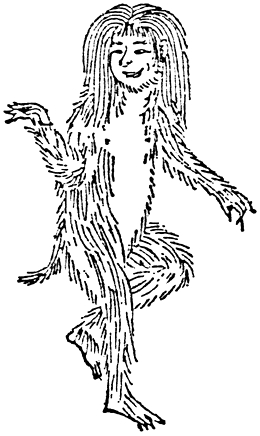
Many autumns ago, my guide and I hiked along the coast of Izu Peninsula (伊豆半島). At noon, we took a break to have lunch. The view was wonderful and it overlooked a small stretch of beach. Then, as we were about to continue our hike, I saw movements on the beach. I enquired what they were. My guide said that they are the local wild inhabitants. She called them shōjō the scarlet drunkard of the beaches.

Shōjō have red shaggy hair, like the Okinawan kijimuna, but with a reddish face just like the They are ape-like creatures more akin to the American bigfoot or abominable snowman. Unlike their mountain cousins, shōjō are intelligent sea yokai. They are able to understand the Japanese language and even say a few words. But usually, they prefer to be left in peace with their alochol.
Cozy Habitat
As shōjō are sea yokai, they prefer coastal areas, especially beach coasts. They live in caves, well hidden from the general population. Also, shōjō love to drink, particularly hard liquor. And they drink excessively. As such, you would often see them playing and frolicing on the beaches. Half drunk and half tipsy, but totally wasted.
Shōjō‘s favourite drink is the Japanese sake. In fact, they are outstanding sake brewers. Legend has it that shōjō make mythical sake from seawater. The enchanting alcohol is able to bring back the health of an old man who is on verge of death. However, it only works on the pure-hearted. The wicked who drinks this supernatural sake will be poisoned instead.
Conclusion
Nontheless, shōjō are docile creatures and prefer to be alone with their kind. But if you are on a Japanese beach with a six-pack and a red shaggy creature approaches you, don’t run. Just offer the shōjō a drink and frolic in the sand with his beer buddies.
Yokai Details
- name: shōjō ( sho-joe )
- kanji: 猩々 (しょうじょう)
- meaning: heavy drinker
- aka: 猩猩
- abilities:
- alcohol transmutation — change seawater into any form of alcohol
- intoxication embodiment — becomes stronger when drunk



